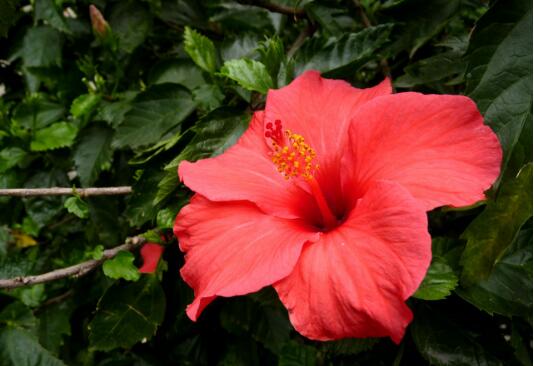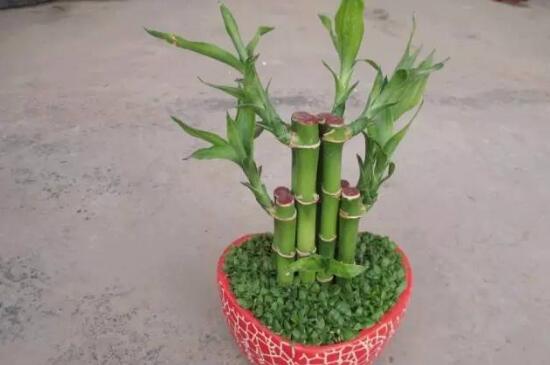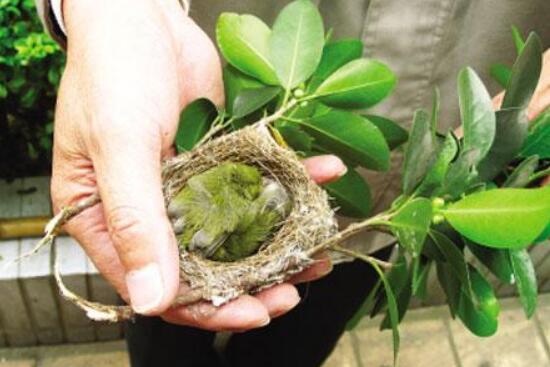How to propagate hibiscus flower? the propagation method of hibiscus flower is mainly cutting propagation.
Hibiscus flower is a common flower plant in people's life, which has high ornamental value and is cultivated in all parts of our country. With the increase in the number of farmers, people are more concerned about its reproduction, about how to breed hibiscus flowers. What are the breeding methods of hibiscus flower? Next, the editor will take you to learn about it.
1. How to reproduce, cuttage / grafting of hibiscus flower

When it comes to how to reproduce hibiscus flowers, in fact, it is mainly divided into two methods: cutting propagation and grafting propagation, of which cutting propagation is a more commonly used one, and the survival rate is relatively high. However, although the number of people used for grafting is relatively small, the survival rate is also very high as long as it is handled properly. Below are the details of the two breeding methods, which interested friends can learn about.
II. Breeding methods of hibiscus flower
Cuttage propagation
1. The selection of matrix and good drainage
Before we carry on the cuttage propagation of hibiscus flower, we must first choose the soil. Generally speaking, we had better choose the humus soil which is loose, fertile and rich in organic matter. This kind of soil has high nutritional value, good drainage and air permeability, and can make the plant grow better.
two。 Matrix disinfection, high temperature disinfection
After we have selected the substrate, we cannot plant it immediately. It is best to sterilize it first so as not to infect the plant due to diseases and insect pests. During disinfection, we can break it up and lay it out in the sun, or we can put it in a pan and stir-fry, so that even if there are diseases and insect pests, they will be killed because of the high temperature.
3. Selection of cuttings and branches with strong growth
After we have selected a good substrate, we also need to choose cuttings. Generally speaking, it is best to choose branches that grow stronger and are free from diseases and insect pests as cuttings, so the survival rate will be higher. If we choose branches that look slim, then it is basically difficult to survive, so we should not be too casual in the choice.
4. Cutting method, rooting in 20-25 days
Among the propagation methods of hibiscus flower, cutting propagation is relatively simple. First, we should cut off the lower leaves of the cuttings, leave the top leaves, and use chopsticks to cut a hole in the substrate, then trim the leaves at the bottom of the cuttings, and then insert the cuttings into 1x2, which is very practical, and then pour water thoroughly to keep the room temperature between 18 and 21 ℃. It will take about 20-25 days to take root.
Grafting propagation
When we carry out grafting propagation of hibiscus flowers, it is best to choose in spring and autumn. This method is generally used for varieties of hibiscus flowers with difficulties in cutting or slow rooting, especially for double varieties with low survival rate of cutting, either branch grafting or bud grafting. The rootstock is supported by a single flower, and the grafted seedlings are cut and blossomed in the same year.
How long is the flowering period of hibiscus hibiscus? the propagation method of hibiscus flower
Hibiscus, also known as Fusang, Buddha hibiscus, Chinese rose, because the flowers and colors are mostly red, so Lingnan area of China calls it the Great Safflower. How long is the flowering period of hibiscus? Today, the editor of wed114 wedding network brings you the florescence of Zhu Jinhua and the breeding methods of Zhu Jinhua and other related contents. Let's take a look.
Zhu Geun Hua pictures
Introduction of Zhu Geun-Hua
Hibiscus (scientific name: Hibiscus rosa-sinensis Linn. ): also known as Fusang, hibiscus, Chinese rose. Because most of the flowers and colors are red, it is commonly known as the Great Safflower in Lingnan, China. Evergreen shrubs, ca. 1-3 m tall; branchlets Terete, sparsely stellate pilose. Leaves broadly ovate or narrowly ovate, both surfaces glabrous except for a little sparse hairs along veins abaxially. Flowers solitary in axils of upper leaves, often pendulous; Corolla funnelform, 6-10 cm in diam., rose red or light red, yellowish, petals Obovate, apex rounded, outside sparsely pilose. Capsule ovate, ca. 2.5 cm, smooth glabrous, beaked. The florescence is all year round.
Hibiscus is a popular ornamental plant in ancient times and its origin is China. The record of hibiscus has appeared in a book "the vegetation of the South" in the Western Jin Dynasty. The flowers are big and colorful, blooming all the year round, mainly for garden use. It is planted all over the world, especially in the tropics and subtropics.
Zhu Geun Hua pictures
II. Flowering stage of hibiscus
The florescence is all year round.
Hibiscus is an evergreen shrub with a height of about 1-3 meters; branchlets cylindrical, sparsely stellate pilose. Leaves broadly ovate or narrowly ovate, 4-9 cm long and 25 cm wide, apex acuminate, base rounded or cuneate, margin coarsely dentate or notched, both surfaces glabrous except for a little sparsely hairy along veins abaxially; petiole 5-20 mm long, villous above; stipules linear, 5-12 mm long, hairy.
Flowers solitary in axils of upper leaves, often pendulous, pedicels 3-7 cm long, sparsely stellate pilose or subsmooth glabrous, proximal articulate; bracteoles 6-7, linear, 8-15 mm long, sparsely stellate pilose, base connate; calyx campanulate, ca. 2 cm, stellate pilose, lobes 5, ovate to lanceolate. Corolla funnelform, 6-10 cm in diam., rose or reddish or yellowish, petals Obovate, apex rounded, outside sparsely pilose; stamen column 4-8 cm long, smooth glabrous; style branches 5.
Capsule ovate, ca. 2.5 cm, smooth glabrous, beaked. The florescence is all year round.
Zhu Geun Hua pictures
III. The mode of propagation of hibiscus flower
Cuttage
From May to October, it was carried out in the greenhouse in winter, but the survival rate was high in the plum rain season. The best cuttings are one-and-a-half Lignification, 10 cm long, cut off the lower leaves, leave the top leaves, cut flat, insert in the sand bed, maintain high air humidity, room temperature is 18-21 ℃, rooting 20-25 days after insertion. The rooting period can be shortened by treating the base of cuttings with 0.3% Mel 0.4% indole butyric acid for 1-2 seconds. Transplant into pot when the root is 3-4 cm long.
Grafting
In spring and autumn. It is mainly used for mulberry varieties with difficult cutting or slow rooting, especially for double-petal varieties with low survival rate of cutting. Branch grafting or bud grafting is possible, and the rootstock is supported by a single flower. The grafted seedlings branch and blossom in the same year.
Zhu Geun Hua pictures
IV. The main values of Zhu Geun-Hua
Hibiscus is a beautiful ornamental flower with colorful flowers and long flowering period. in addition to red, there are different varieties such as pink, orange, yellow, pink edge, red heart and white; in addition to single, there are double varieties. Potted hibiscus is one of the best flowers for festive parks, flower beds, hotels, meeting places and families.
Roots, leaves and flowers can be used as medicine, which has the effect of clearing heat and promoting diuresis, detoxification and detumescence. In the south, hibiscus is mostly planted by the pool, in front of the pavilion, beside the road and by the wall, and the red flowers blossom constantly throughout the year. The Yangtze River basin and the north often decorate balconies or small gardens with potted plants. Under the condition of sufficient light, the viewing period is particularly long. It is also one of the main flowering potted plants placed in public places in summer and autumn.
How to propagate, the propagation method of Tetranychus angustifolia / mainly by cutting
Euphorbia angustifolia is a common ornamental flower plant in people's life, and there are many people raising it in all parts of our country. With the increase in the number of farmers, people are more concerned about their reproduction. How do they reproduce? What are the propagation methods of Rabdosia paniculata? Next, the editor will take you to learn about it.
1. How to propagate the flowers, cuttings / strips
When it comes to how to reproduce, in fact, it is mainly divided into two methods: cutting propagation and striping propagation, of which cutting propagation is a more commonly used one, although striping propagation is relatively less, but the survival rate is not low at all. in the following, there are two specific methods of reproduction, let's take a look at it.
2. Methods of propagation of Dendrolimus officinalis
Cuttage propagation
1. Substrate selection, humus soil
Before we breed the flower, we first need to choose the substrate, which is a step to lay a good foundation, so we must choose the most suitable one. Generally, it is best to choose loose and fertile humus soil as the matrix, this kind of soil drainage and air permeability are better, so that plants can better absorb nutrients, but also not prone to stagnant water.
two。 Matrix disinfection, high temperature disinfection
After we have selected the substrate, we also need to disinfect it so as not to infect the flower with bacteria. There are two ways to disinfect it. One is that we can break it up and lay it flat and expose it in strong light. At the same time, we can also put it in a pan and turn it on fire to stir-fry, so that even if there are diseases and insect pests in it, they will be killed because of the high temperature.
3. Selection of cuttings and branches with strong growth
After we have selected a good substrate, we also need to choose cuttings. Generally speaking, it is best to choose branches that grow stronger and are free from diseases and insect pests as cuttings, so the survival rate will be higher. If we choose branches that look slim, then it is basically difficult to survive, so we should not be too casual in the choice.
4. Cutting method, subtracting the bottom leaf
In the method of propagation, cutting propagation is a relatively simple one. Before cutting, we can use chopsticks to cut a hole in the substrate, then trim off the leaves at the bottom of the cuttings, and then insert the cuttings into 1pm 2. This operation can avoid damage to the cuttings, is very practical, and then watered and placed in a cool place for a week can always be cultured in the sun.
Striping propagation
In the process of striping propagation, we should select the long branches with strong growth, then bend them and bury them in the soil, or wavy strips, and then separate them from the mother plant after taking root. This method is generally best carried out in spring and autumn, because the climate is more suitable for its growth, so the survival rate will be higher.
- Prev

How to propagate Lily Bamboo and the method of Cuttage Propagation / rooting by cutting in Spring
For lily bamboo, we must be no stranger, it often appears in the form of water in the living room, office and other places, has an excellent ornamental. But is a pot of lily bamboo too monotonous? It's time to get a few more pots. If you don't buy it in the past, you might as well breed it yourself. How can lily bamboo breed?
- Next

How to propagate banyan tree, banyan tree propagation method Daquan / cutting / striping / grafting / sowing
Banyan tree, a variety of shapes, incomparably beautiful plant, its roots are unusually developed, often exposed to the soil, the upper body is luxuriant, deeply loved by flower friends. In life, many flower friends want to raise banyan trees. If they don't buy them in the past, they might as well plant them themselves. How can banyan trees reproduce?
Related
- Fuxing push coffee new agricultural production and marketing class: lack of small-scale processing plants
- Jujube rice field leisure farm deep ploughing Yilan for five years to create a space for organic food and play
- Nongyu Farm-A trial of organic papaya for brave women with advanced technology
- Four points for attention in the prevention and control of diseases and insect pests of edible fungi
- How to add nutrient solution to Edible Fungi
- Is there any good way to control edible fungus mites?
- Open Inoculation Technology of Edible Fungi
- Is there any clever way to use fertilizer for edible fungus in winter?
- What agents are used to kill the pathogens of edible fungi in the mushroom shed?
- Rapid drying of Edible Fungi

